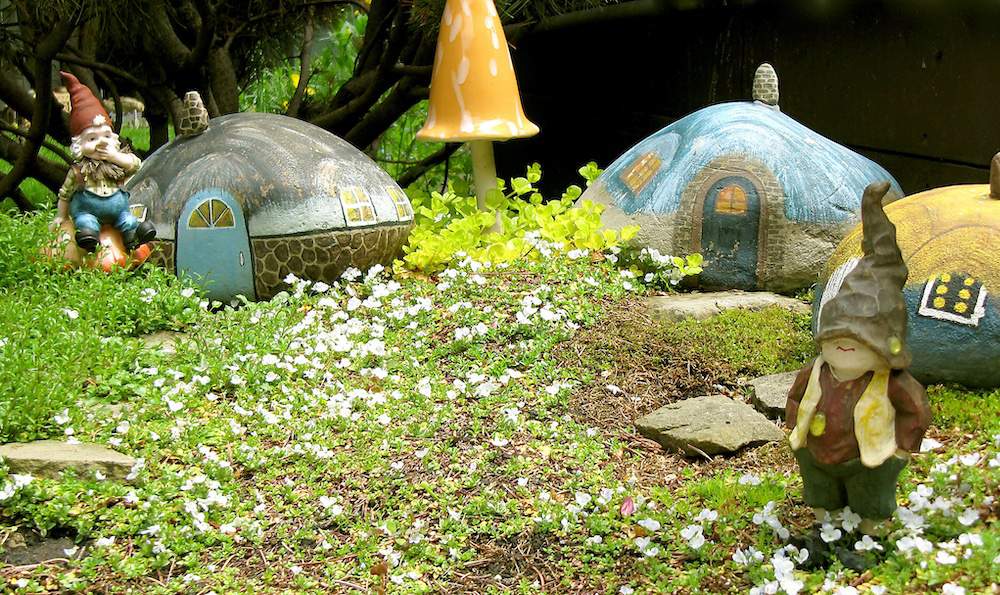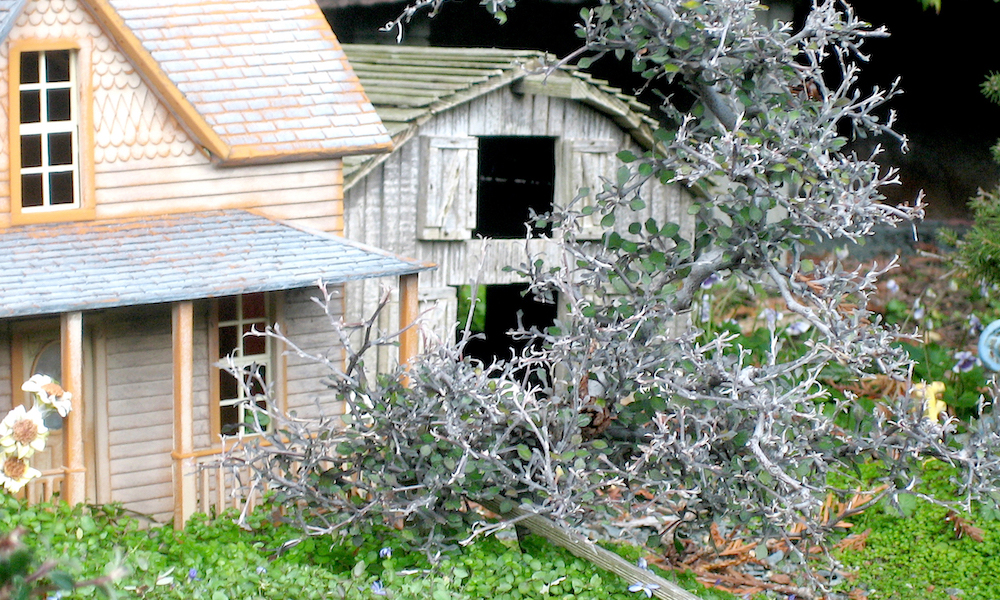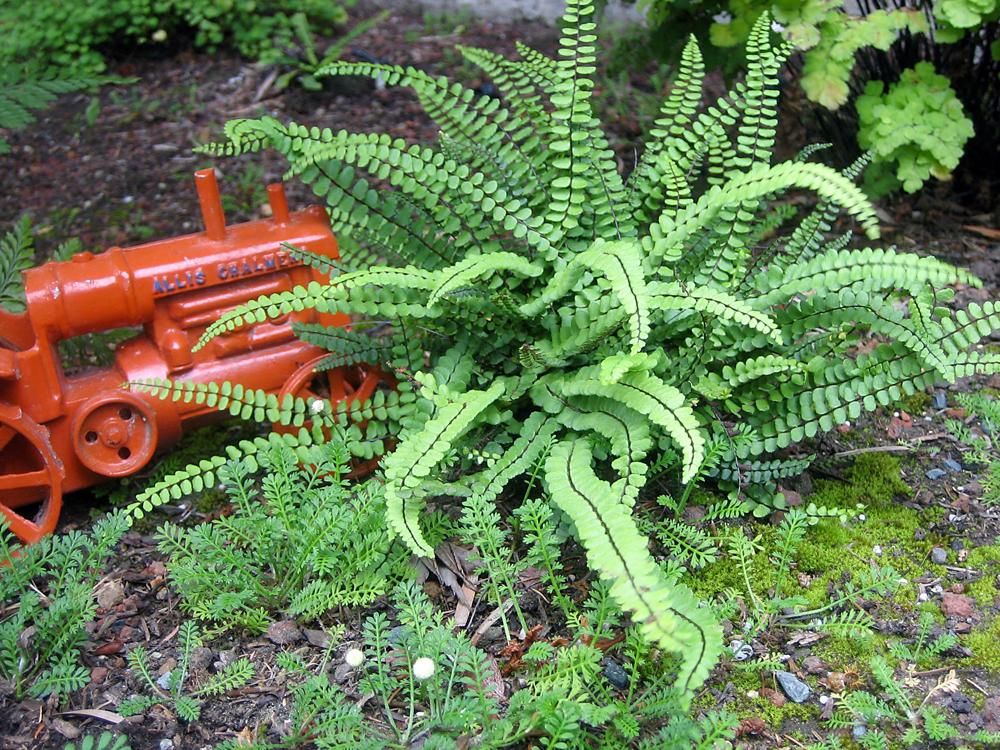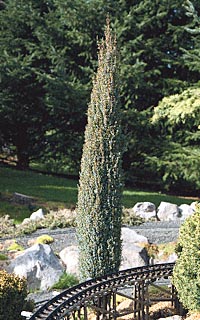Common name: Coral bark Japanese maple
Latin name: Acer palmatum ‘Sango kaku’ (syn. A.p. ‘Senkaki’)
Plant size: 15-20′ high by 15-20′ wide, unpruned
USDA Hardiness Zones: 4-9
Plant type: shrubs and small trees
Cultural needs: Moist, well drained, neutral or slightly acidic soil; full sun to part shade
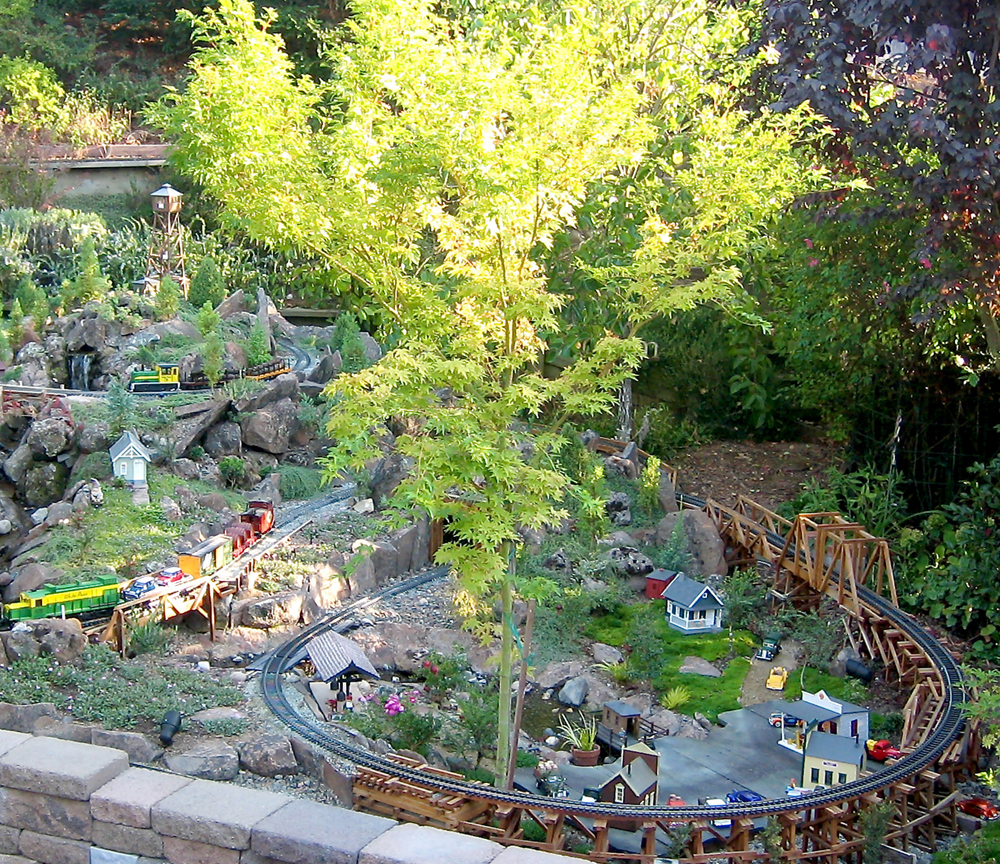
One of the most popular, semi-dwarf Japanese maples, called coral-bark maple, came from a seedling discovered in Australia. In the photo, the full-size specimen (center), wearing the start of its fall, yellow color, is planted just south of the central viewing area of this railway to provide a little shady respite. It was purchased a year earlier, with a strong trunk breaking into a natural parasol of cooling, arching branches about five feet from the ground. To its right, a smaller, coral-bark maple is a pruned version of the canopy tree. It provides shade for the 3″ figures in the town park. “Sango kaku” means red bark.
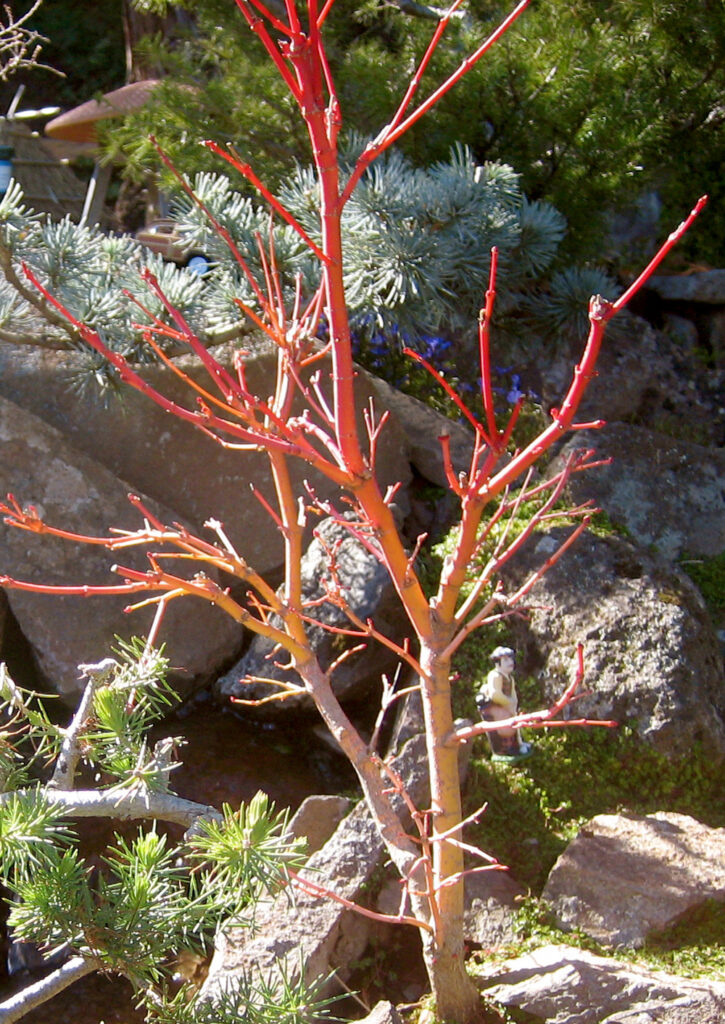
If your tree’s bark doesn’t show a lot of red, wait until winter after deciduous leaves have fallen. If it gets enough sun, it will blaze into a showy mass of florescent, pinky-red twigs. Coral-stemmed dwarfs and semi-dwarfs include A.p. ‘Fjellheim’ (Zone 5-9, matures at 6-8′), A.p. ‘Winter Flame’ (Zone 5-8, matures at 6-10′), A.p. ‘Aka kawa hime’ (Zone 6-9, matures at 6-10′), and A.p. ‘Beni kawa’ (Zone 4-9, matures at 15-20′). As this tree grows in a wide range of Zones, buy one that has been growing near you.






